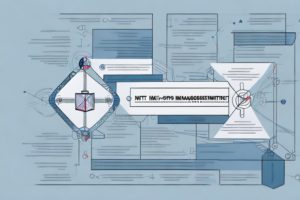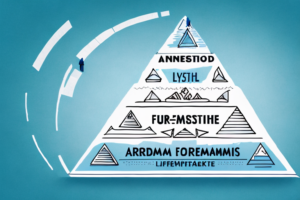What order are the 5 stages of risk management in?

A five-step process
Organizations today face a wide range of risks that can have significant impacts on their operations, reputation, and financial health. Effective risk management is therefore crucial to ensure these risks are identified, evaluated, and controlled in a timely and effective manner. The process of risk management typically involves five key stages, each of which represents a critical step in the overall risk management process.
Understanding the importance of risk management in today’s business landscape
The current business landscape is characterized by a high degree of uncertainty, complexity, and change. Organizations face a growing number of risks, including cybersecurity threats, natural disasters, supply chain disruptions, regulatory compliance issues, and financial market volatility, among others. These risks can impact various aspects of the business, including the reputation, customer trust, employee safety, and financial performance. Risk management plays a vital role in helping organizations anticipate, prevent, and mitigate these risks, thereby ensuring continuity of operations and safeguarding the interests of stakeholders.
Effective risk management involves identifying potential risks, assessing their likelihood and impact, and developing strategies to manage or mitigate them. This requires a comprehensive understanding of the organization’s operations, objectives, and risk appetite. Risk management also involves ongoing monitoring and evaluation of risks and risk management strategies to ensure their effectiveness and relevance in the changing business environment. By implementing a robust risk management framework, organizations can enhance their resilience, agility, and competitiveness, and create value for their stakeholders.
The five stages of risk management: an overview
The five stages of risk management are as follows:
- Identifying risks
- Assessing risks
- Risk analysis
- Risk response
- Monitoring and reviewing risks
Each stage is interconnected and builds on the previous one, forming a continuous cycle of risk management.
It is important to note that risk management is not a one-time process, but rather an ongoing effort to identify and mitigate potential risks. The monitoring and reviewing stage is crucial in ensuring that the risk management plan remains effective and up-to-date. This stage involves regularly assessing the effectiveness of the risk response strategies and making necessary adjustments to the plan. By continuously monitoring and reviewing risks, organizations can proactively identify and address potential threats before they become major issues.
Stage 1: Identifying risks – why it’s crucial and how to do it effectively
The first stage of risk management is identifying potential risks that could affect the organization. This involves a systematic and comprehensive process of identifying risks from various sources, including internal and external environments, processes, activities, and systems. Effective risk identification requires a proactive approach that involves all stakeholders, including employees, customers, suppliers, and partners. Various techniques can be used to identify risks, including risk assessments, gap analyses, internal audits, and external benchmarking. The key to success in this stage is to ensure that all relevant risks are identified and prioritized based on their likelihood and potential impact on the organization.
It is important to note that risk identification is an ongoing process that should be regularly reviewed and updated. As the organization evolves and new risks emerge, it is crucial to reassess and adjust the risk management plan accordingly. Additionally, involving a diverse group of stakeholders in the risk identification process can lead to a more comprehensive understanding of potential risks and better decision-making when it comes to prioritizing and addressing them.
Stage 2: Assessing risks – measuring the impact and likelihood of each risk
After identifying potential risks, the next stage is to assess each risk’s impact and likelihood. This involves evaluating each risk’s potential consequences on the organization, such as financial losses, reputational damage, legal liabilities, and compliance issues. It also involves determining the likelihood of each risk occurring based on historical data, expert opinions, and other relevant factors. The risk assessment process helps prioritize which risks are most critical and require immediate attention.
One important aspect of assessing risks is to consider the interdependencies between different risks. For example, a cyber attack on the organization’s IT system could lead to a data breach, which in turn could result in legal liabilities and reputational damage. By understanding these interdependencies, organizations can better prepare for and mitigate potential risks.
Another key factor to consider during the risk assessment process is the organization’s risk appetite. This refers to the level of risk that the organization is willing to accept in pursuit of its objectives. By understanding the organization’s risk appetite, risk managers can ensure that the risks being assessed align with the organization’s overall strategy and goals.
Stage 3: Risk analysis – evaluating the severity and potential consequences of each risk
The third stage of risk management is risk analysis, which involves evaluating the potential consequences of each identified risk and determining the level and severity of the risks. This requires a detailed analysis of each risk’s potential impacts, including the likelihood of occurrence, the extent of the potential damage, and the speed at which the risk could materialize. Risk analysis helps organizations make informed decisions about how to manage risks and allocate resources effectively to minimize potential losses.
During the risk analysis stage, it is important to consider the interdependencies between risks and how they may impact each other. For example, a natural disaster may not only cause physical damage to a company’s facilities but also disrupt supply chains and impact customer demand. By understanding these interdependencies, organizations can develop more comprehensive risk management strategies that address multiple risks simultaneously.
Stage 4: Risk response – developing strategies to mitigate or avoid identified risks
The fourth stage of risk management is developing strategies to mitigate or avoid identified risks. This involves developing and implementing risk management plans that outline specific actions to take to minimize risks and their associated consequences. The risk response process includes four main strategies: risk avoidance, risk reduction, risk sharing, and risk acceptance. Risk avoidance involves eliminating the source of the risk, while risk reduction involves implementing measures to reduce the likelihood or severity of the risk. Risk sharing involves transferring the risk to another party, such as through insurance or outsourcing. Risk acceptance involves accepting the risk and its potential consequences, where the benefits outweigh the risks.
When developing risk management plans, it is important to consider the potential impact of each risk on the organization. Some risks may have a greater impact than others, and therefore require more attention and resources. It is also important to regularly review and update risk management plans to ensure they remain relevant and effective.
In addition to developing strategies to mitigate or avoid identified risks, organizations should also have contingency plans in place to address unexpected events or emergencies. These plans should outline specific actions to take in the event of a crisis, and should be regularly tested and updated to ensure they are effective.
Stage 5: Monitoring and reviewing risks – why ongoing evaluation is key to effective risk management
The final stage of risk management is ongoing monitoring and reviewing. This involves regular monitoring of the identified risks and their associated controls to ensure they are working effectively, as well as reviewing the risk management plan’s overall effectiveness. Organizations should establish a monitoring and reporting system to enable them to detect changes in the risk profile and respond in a timely manner. By monitoring and reviewing the risk management process, organizations can identify potential weaknesses and opportunities to improve their risk management approach over time.
One important aspect of ongoing monitoring and reviewing is the need to stay up-to-date with changes in the external environment. This includes changes in the regulatory landscape, market conditions, and emerging risks that may impact the organization. By staying informed and adapting their risk management approach accordingly, organizations can better protect themselves from potential threats.
Another key benefit of ongoing evaluation is the ability to demonstrate to stakeholders that the organization is taking risk management seriously. This can include providing regular reports on the status of identified risks and the effectiveness of controls, as well as highlighting any improvements made to the risk management process over time. By demonstrating a commitment to effective risk management, organizations can build trust with stakeholders and enhance their reputation in the marketplace.
How the order of risk management stages impacts overall success
The order of the risk management stages is crucial to the overall success of the risk management process. Each stage builds on the previous one, so if one stage is missing or poorly executed, it can compromise the entire risk management process’s effectiveness. For example, if risks are not adequately identified, the assessment of risks will be incomplete, leading to a skewed risk analysis. Similarly, if a proper response strategy is not developed, the monitoring and reviewing may not be effective in mitigating the risks.
Examples of successful risk management strategies in different industries
Effective risk management strategies can differ across different industries and organizations, based on their specific risk profile and context. For example, the healthcare industry may have unique risks related to patient safety and data privacy, while the manufacturing industry may have risks related to supply chain disruptions and product quality issues. Some successful risk management strategies include adopting a risk-based approach, leveraging technology and analytics, engaging all stakeholders, and ensuring ongoing education and training.
Common mistakes to avoid when implementing a risk management plan
Organizations face various challenges when implementing a risk management plan, such as a lack of resources, competing priorities, and resistance to change. Some common mistakes to avoid include ignoring emerging risks, over-reliance on certain risk management tools, and the lack of communication and collaboration among stakeholders.
How technology is changing the landscape of risk management
The rise of emerging technologies, such as artificial intelligence, blockchain, and the cloud, is reshaping the risk management landscape. These technologies offer new opportunities for organizations to enhance their risk management processes by providing real-time insights, streamlining data collection and analysis, and increasing efficiency and accuracy. However, the use of these technologies also presents new risks and challenges, such as cybersecurity threats, data privacy concerns, and the need for specialized skills and expertise.
Tips for implementing an effective risk management plan in your organization
Implementing a risk management plan is a complex process that requires careful planning, coordination, and communication across all levels of the organization. Some tips for successful implementation include establishing clear roles and responsibilities, aligning the risk management plan with the organization’s strategic goals, investing in employee training and development, leveraging technology and analytics to drive insights and improvement, and fostering a culture of risk management.
The role of leadership in ensuring the successful implementation of a risk management plan
The success of a risk management plan heavily relies on the leadership’s support and commitment. Leaders play a critical role in establishing a strong risk management culture, ensuring the allocation of adequate resources, setting appropriate targets and benchmarks, and providing regular feedback and incentives to the risk management team. Leaders also need to lead by example, demonstrating their commitment to risk management through their actions and decisions.
The future of risk management: emerging trends and best practices
The risk management landscape is constantly evolving, driven by new technologies, changing business models, and emerging risks. Some emerging trends and best practices in risk management include the use of real-time data and analytics, leveraging strategic partnerships and collaborations, implementing an integrated risk management approach, and adopting agile risk management methodologies. As organizations continue to face new and complex risks, staying ahead of these trends and best practices will be critical to their long-term success.
In conclusion, risk management is a crucial process that enables organizations to minimize the impact of potential risks and achieve their strategic goals. The five stages of risk management, including identifying risks, assessing risks, risk analysis, risk response, and monitoring and reviewing risks, represent a comprehensive and systematic approach to managing risks. By understanding the importance of each stage and following best practices, organizations can build a robust risk management culture that ensures long-term resilience and success.



